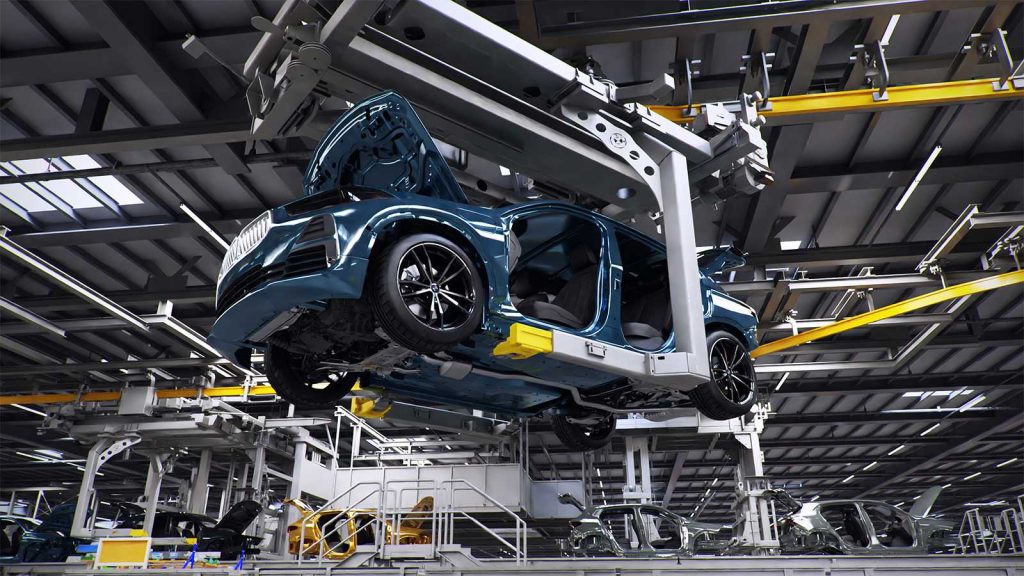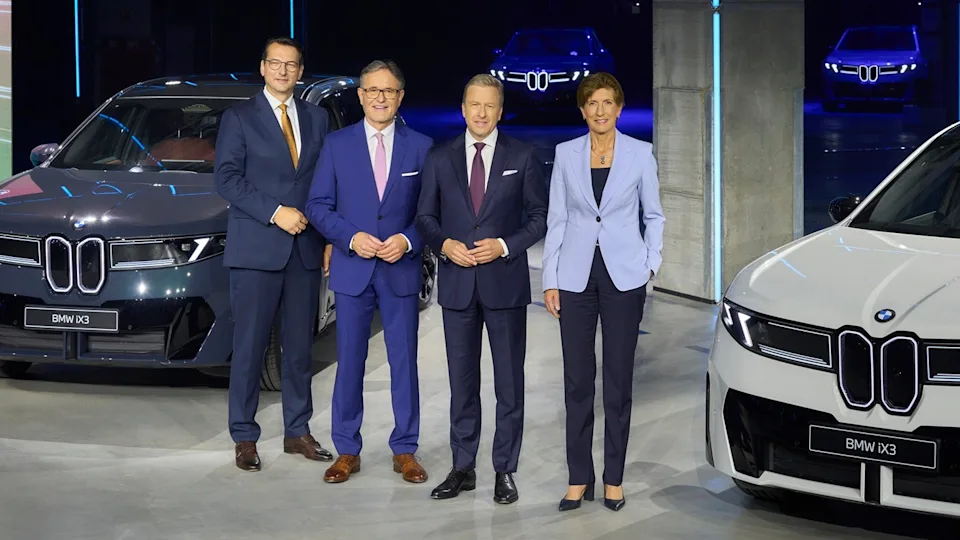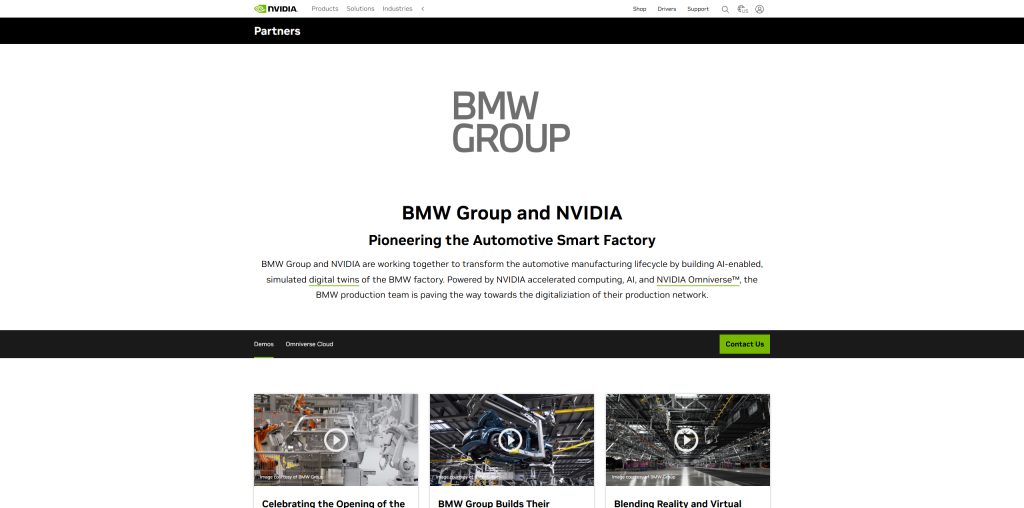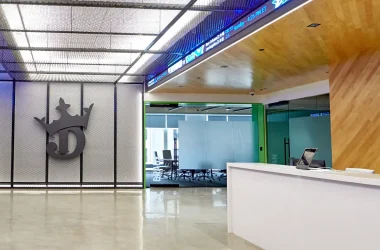If you only want the short version: yes, BMW Group uses AI—across planning, factories, purchasing, and customer touchpoints. It’s not a lab demo. It’s part of how cars, batteries, and software get made and supported. The company even says it has “hundreds of use cases in series production today,” stretching from development to sales. That’s a big claim, but the evidence stacks up.
Long before a body panel is stamped, the BMW Group runs a “Virtual Factory.” Think of it like a digital twin of more than 30 sites where planners try ideas, test layouts, and simulate worker movements—weeks of on-site trial once needed now happen in software. It’s practical: change a robot path in the model, prevent a bottleneck in reality. BMW says this virtual environment is being “industrialised,” with applications scaled across the network.
That virtual-first habit isn’t just a neat trick. It shortens learning cycles. When you can rehearse with accurate data instead of guesswork, the physical build goes smoother—and cheaper.
On the line: image recognition, surface checks, and a friendly “genius”

At plant level, AI leans heavily on vision. In Regensburg, BMW has rolled out a pilot called “GenAI4Q” that tailors quality checks to the task at hand. Learning-based analysis helps workers focus where it matters, rather than scanning every single step the same way. The company framed it as “a quality booster,” which—sure—sounds like a headline, but it’s also a specific, ongoing project, not a buzzword.
Paint shops are a good example of where cameras plus models shine. Surfaces get scanned automatically; flagged spots are handled, then double-checked by people for final assurance. It’s rather boring in the best way: fewer defects reach the next station.
Maintenance is getting a conversational layer. In July 2025, BMW introduced “Factory Genius,” a generative AI assistant that production teams can query when equipment misbehaves. It pulls from manuals, fault logs, and internal reports; it summarizes steps; it even handles translation for teams building new plants. As Michael Ströbel, who leads process management in production, put it,
“AI applications have become an integral part of modern production systems… Factory Genius is an example of how generative AI… can streamline operations.”
That’s a tidy way to say downtime shrinks when answers show up fast.
Buying smarter: agents that fetch, compare, and prep
Procurement isn’t just email and spreadsheets anymore. In late 2024, BMW turned on an internal multi-agent system called AIconic for its Purchasing and Supplier Network. It acts as a central AI entry point where teams ask natural-language questions and get quick, sourced results. Early tools like Tender Assistant, Offer Analyst, and Knowledge Navigator help draft tenders, compare supplier offers, and mine prior cases. By mid-2025, BMW reported over 1,800 active users and around 10,000 searches, with an emphasis on speeding up routine steps so people can tackle the exceptions. The company’s line on this is clear: “Empowering our people to use AI technologies is our top priority.”
It’s easy to miss how cultural that is. When a manufacturer nudges thousands of buyers to talk to a software agent while keeping governance tight, you’re watching process change at company scale.
Debrecen: a new plant shows the playbook

Sometimes you need a single site to see the strategy in one place. The new Debrecen plant—home to the next-gen iX3 and Gen6 batteries—was modeled and tested in the Virtual Factory, then built to match that digital twin. On the floor, an in-house quality platform called AIQX watches sensors and cameras and feeds real-time guidance to line workers. For the battery ramp-up, BMW says it will lean on AI, analytics, and heavy knowledge-sharing across the network. In a sentence: it’s a showcase for the “digital, efficient, and fossil-free” version of their production model.
You know what? This is where AI feels less like a gadget and more like plumbing. Quiet, broad, and everywhere.
Customers feel it, even if they don’t see it
On the front end, BMW and MINI run an AI assistant to answer product and service questions around the clock with verified knowledge. It’s the kind of support tool that saves you a phone call and saves the team a queue.
In China, BMW also flagged plans to integrate AI from local startup DeepSeek into new models starting later in 2025. The CEO spelled out the reasoning: key advances are happening there, so bring them into the car where that market expects fast, smart features. Different region, different partner, same theme.
The tools behind the curtain: NVIDIA, AWS, and a giant open dataset

Two partners show up often in BMW’s AI story.
First, NVIDIA. BMW uses Omniverse to build and test virtual factories and DGX systems to train the models behind computer vision and simulation. One standout is SORDI, a massive synthetic dataset the company published with partners to speed up training for industrial vision tasks. BMW describes it as the largest reference dataset of its kind for manufacturing. The idea is clever: generate realistic images of parts, pallets, forklifts, and shop-floor scenes so models learn faster and generalize better. That pays off in inspection and logistics, where the cost of mislabeling is real.
Second, AWS. BMW built a generative AI assistant for its cloud operations using Amazon Bedrock. Dr. Jens Kohl, who leads offboard architecture, explains the appeal: they can choose different large language models, keep data in the company’s secure environment, and—yes—cut time and cost. His summary is plain:
“Using Amazon Bedrock, we’ve been able to scale our cloud governance, reduce costs and time to market, and provide a better service for our customers.”
That’s DevOps, but it trickles down to drivers when connected services get smoother.
If you’ve ever wondered why a carmaker would publish a giant dataset, this is why. You lower the friction for your own teams and you invite an ecosystem of researchers and suppliers to bring ideas that plug in—and work.
A quick reality check: numbers, quotes, and where the line is drawn
BMW’s own AI page says the group uses AI in “over 600” use cases across development, production, purchasing, and sales. The wording matters; it suggests breadth rather than a single flagship app. Meanwhile, the Virtual Factory is not a pilot; it covers digital twins of more than 30 sites. And on the shop floor, we have specific initiatives with names, goals, and—crucially—people quoted on record. That trail of press statements and technical write-ups is the reason this doesn’t read like a science fair.
Could we nitpick? Sure. AI is not a magic wand. Some tasks remain stubbornly physical, some models drift, and not every plant needs the same level of automation. Also, a fair bit of the work is foundational: labeling, governance, training, retraining. But if you measure commitment by sustained investment and visible rollouts, the pattern is clear.
What it means for people on the floor
There’s always a “but what about the jobs?” moment. The practical answer at BMW right now looks like this: let the system inspect surfaces, let an assistant fetch the maintenance steps, let an agent compare tenders, and let the humans handle fixes, trade-offs, and improvement ideas. You’ll hear managers talk about freeing time for creative tasks. That sounds neat; it only sticks if the tools actually save minutes and the organization rewards the higher-value work. The Factory Genius example—summaries pulled from manuals and shift logs—feels like it passes that test, because it gives time back during actual downtime.
There’s also the training angle. Debrecen’s buildout leaned on virtual planning and shared playbooks across countries. When the digital twin reflects the real line and a worker can practice steps before a tool arrives, onboarding feels less stressful. Again, boring in the right way.
So, hype or habit?
Let’s put it plainly. BMW Group uses AI to:
- plan factories virtually and simulate changes before they hit the floor;
- watch quality in real time and flag issues that eyes miss or miss too late;
- speed up maintenance with a chat interface that actually knows the machines;
- help buyers and engineers search, compare, and draft with agent-based tools;
- support cloud operations and connected services at scale;
- answer customers’ routine questions without making them wait.
If you’re looking for a single moonshot, you’ll miss the story. The story is many small wins stitched together—sometimes invisible to outsiders—until the build gets smoother, the launch lands on time, and the car that shows up in your driveway needed fewer do-overs along the way.
One last thing. You can tell a program is real when the jargon gives way to names and numbers: AIQX at Debrecen, Factory Genius in Dingolfing, AIconic in Purchasing, a Virtual Factory mirroring over 30 sites, a chatbot answering owners, a Bedrock-based assistant helping DevOps teams. It’s not flawless. But it’s not hand-waving either. It’s the work.
Bottom line: BMW Group isn’t experimenting with AI on the side. It’s building with it, planning with it, and supporting customers with it—and the company keeps publishing specifics that anyone can check. That’s the kind of signal you watch when you want to know who’s serious.









